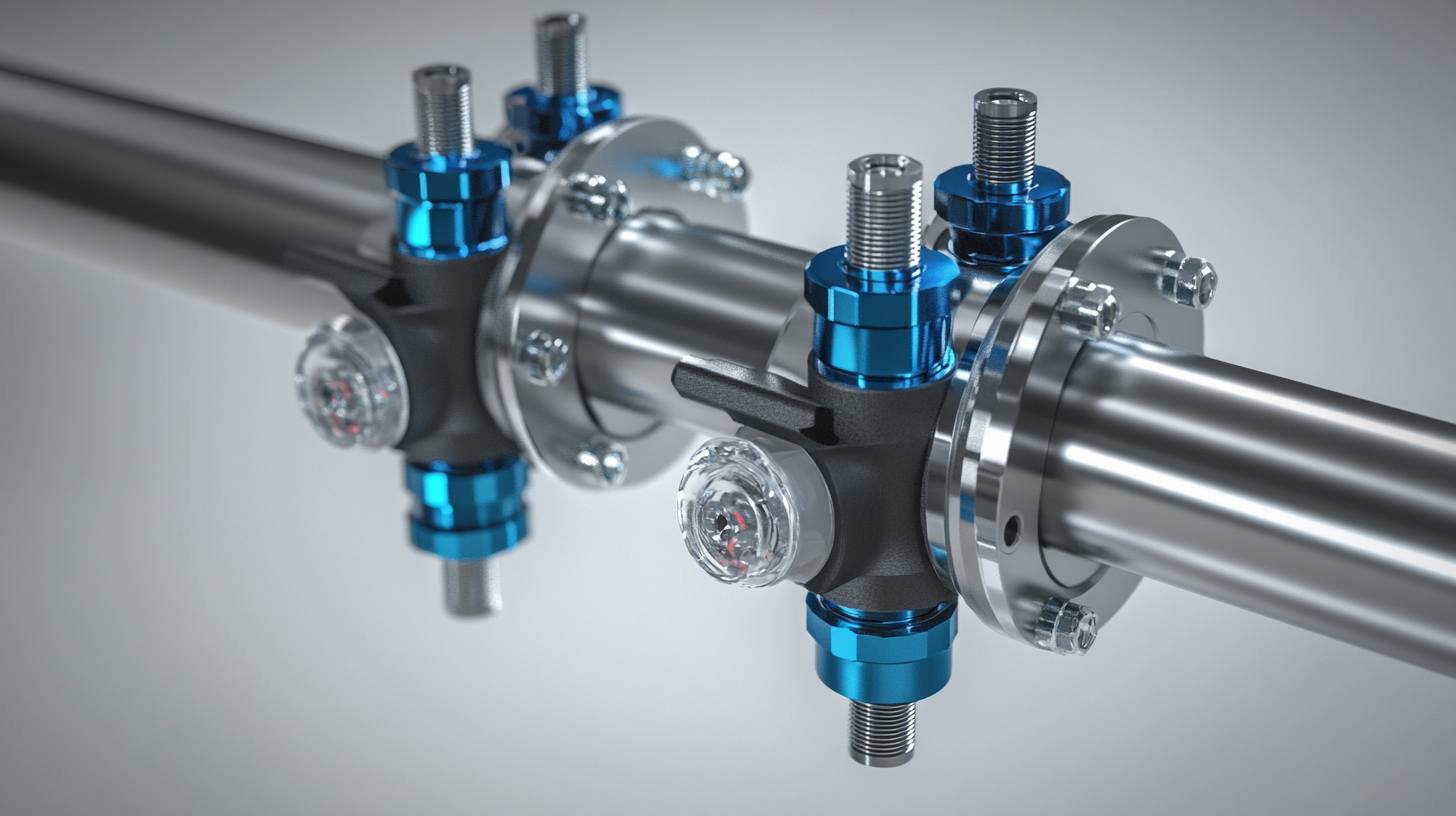In the rapidly evolving field of fluid dynamics, the significance of efficient flow regulation cannot be understated. Flow regulators play a crucial role in various industries by ensuring optimal fluid control, which enhances system performance and energy efficiency. According to a report by MarketsandMarkets, the global flow regulator market is projected to reach $4.2 billion by 2025, driven by increasing demand for refined process control solutions across sectors such as water treatment, pharmaceuticals, and manufacturing. Innovations in flow regulator technology are essential to meet these demands, as they contribute to minimizing waste and reducing operational costs. This blog explores the 15 best innovations in flow regulator design that are reshaping industry standards, highlighting advancements that not only improve functionality but also comply with critical import and export certifications essential for global trade.

In the evolving landscape of flow regulators, key innovations are actively enhancing customer support in the after-sales domain. Companies are increasingly recognizing the importance of aftermarket sales and service strategies as a means of boosting operational cash flow and minimizing risk. By integrating advanced technologies, such as IoT and AI, manufacturers can provide real-time monitoring and predictive maintenance solutions, leading to improved customer satisfaction and loyalty.
As industries face heightened competitive pressures and shifting customer expectations, flow regulators that prioritize customer-centric designs and features are essential. Innovations like modular designs and automated adjustments not only enhance product performance but also simplify the servicing process. This ensures that customers receive timely support, thereby transforming after-sales service from a reactive to a proactive approach.
Ultimately, these advancements not only enhance the overall user experience but solidify long-term relationships between manufacturers and their clients.
The flow regulation market is witnessing significant growth, driven by the increasing demand for cost-effective maintenance solutions across various sectors. According to a recent industry report, the global market size for flow regulation technologies is projected to reach approximately $10 billion by 2025, with a compound annual growth rate (CAGR) of 7.5%. This growth can be attributed to the rising necessity for efficient resource management in both large enterprises and SMEs, as organizations strive to optimize operations and reduce costs.
Deployment strategies play a crucial role in the market dynamics, with cloud-based solutions gaining a substantial share. It is forecasted that cloud deployment will contribute to over 60% of the market share by 2023, primarily due to its scalability and ease of integration with existing systems. Furthermore, industries such as cybersecurity and network management are increasingly adopting advanced flow regulation technologies, reacting to the surge in data traffic and the need for enhanced performance metrics. This trend emphasizes the urgency for innovative solutions that not only address immediate operational challenges but also pave the way for sustainable growth in the market.
 Flow regulators play a crucial role in various industries, ensuring that liquids and gases are delivered at a consistent and safe rate. One noteworthy application is in irrigation systems, where innovative flow regulators can optimize water usage in farming. By maintaining a steady flow rate, these devices help prevent overwatering, which can lead to soil erosion and nutrient loss. For instance, smart flow regulators equipped with sensors can adjust the flow based on real-time soil moisture levels, thereby maximizing efficiency and crop yield.
Flow regulators play a crucial role in various industries, ensuring that liquids and gases are delivered at a consistent and safe rate. One noteworthy application is in irrigation systems, where innovative flow regulators can optimize water usage in farming. By maintaining a steady flow rate, these devices help prevent overwatering, which can lead to soil erosion and nutrient loss. For instance, smart flow regulators equipped with sensors can adjust the flow based on real-time soil moisture levels, thereby maximizing efficiency and crop yield.
Another exciting application is in medical devices, particularly in the administration of intravenous (IV) fluids. Advanced flow regulators ensure that patients receive the correct dosage at a controlled rate, which is critical for treatment efficacy and patient safety. Some modern IV flow regulators feature digital displays and alarms that help healthcare providers monitor and adjust flow rates easily. This innovation not only enhances patient care but also streamlines the workflow in busy medical environments, demonstrating the importance of precision in healthcare delivery systems.
When selecting a flow regulator, understanding the differences in models and their service benefits is crucial to optimizing performance in various applications. Advanced flow regulators are designed not only to control flow rates but also to enhance efficiency and reliability. By comparing features such as material durability, precision in flow control, and ease of maintenance, one can determine which model best fits specific operational needs.
Tip: When assessing flow regulator models, prioritize those that offer a transparent construction. This allows for easy monitoring of flow conditions and facilitates timely maintenance, which ultimately enhances longevity and performance.
Another important factor in the comparative analysis is the technology used in each model. Many innovative flow regulators now incorporate smart technology for real-time monitoring and data analysis. This not only improves operational efficiency but also helps identify potential issues before they escalate.
 As industries evolve, the demand for efficient flow regulation becomes increasingly critical. Future trends in flow regulation are poised to enhance operational efficiency through the integration of advanced technologies. Innovations such as smart sensors and IoT connectivity enable real-time monitoring and adjustments, allowing businesses to optimize resource usage and reduce waste. This shift towards automation not only streamlines processes but also minimizes the risk of human error.
As industries evolve, the demand for efficient flow regulation becomes increasingly critical. Future trends in flow regulation are poised to enhance operational efficiency through the integration of advanced technologies. Innovations such as smart sensors and IoT connectivity enable real-time monitoring and adjustments, allowing businesses to optimize resource usage and reduce waste. This shift towards automation not only streamlines processes but also minimizes the risk of human error.
